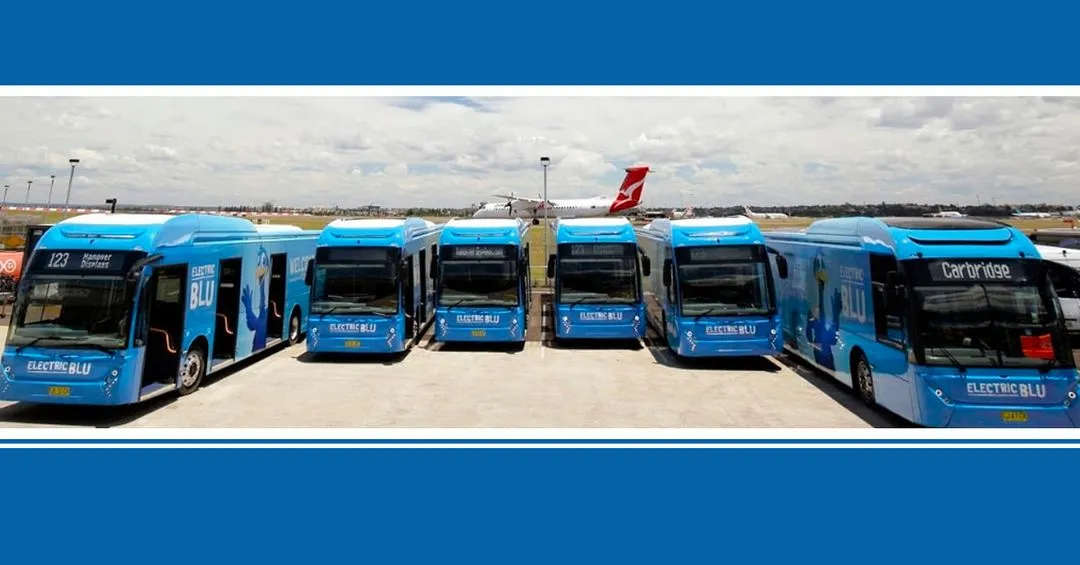Highlights: Battery Electric Bus Charging Infrastructure for a 100+ Depot

Webinars are a great resource to engage with industry experts without spending the time, money, or greenhouse gases to get there. CTE conceptualized and hosted a recent webinar - Battery Electric Bus Charging Infrastructure for a 100+ Depot, moderated by our own, Joel Donham - Engineering Consultant at CTE's St. Paul, MN office. We brought in the experts on this topic, getting perspectives from the industry as well as from the user. Leah O'Dwyer, head of eBus solutions at ChargePoint, spoke about the technical considerations transit agencies must evaluate when creating depot charging for a large fleet conversion.
Topics like these are not far-off dreams for transit agencies across the country, but ambitious goals California agencies are expected to meet by 2040. Ms. O'Dwyer was joined by Gary Miskell, Chief Information and Technology Officer for Santa Clara Valley Transportation Authority (VTA). Mr. Miskell gave VTA's hands-on perspective on finding the balance between bus charging efficiency and money savings for his agency. VTA was able to recruit top talent from National Renewable Energy Laboratory (NREL) in order to get the most favorable charging rates for his agency. If you missed our webinar with APTA, we have compiled the best moments from the presentation: The State of Zero Emission Buses. CTE's Joel Donham explains that the future for ZEB technology in the states is bright. Citing a study conducted by CTE on U.S. ZEB Annual Sales and Deliveries, Donham confirms that the industry has experienced explosive growth: "We've seen ZEB sales more than quadruple over the last 5 years."

Source: Center for Transportation and the Environment Infrastructure Considerations for BEBs: Depot Design and Fueling Footprint Leah O'Dwyer provides ChargePoint's expert opinion after working alongside dozens of transit agencies to consider large fleet electrification. "Everything is hands-on in terms of planning around the real estate the transit agency has available." Ms. O'Dwyer is referring to considerations of space for charging ports, which is often a tricky situation for transit agencies dealing with already limited space when converting to zero-emission bus technology. O'Dwyer assures listeners that ChargePoint has made the tightest of spaces work for transit agencies by considering charge management for the electric fleet.
"An operator decides that there will be 10 buses and 10 chargers, and so on. If you have 100 buses, and 100 charging stations, you may exceed your [transit agency's] electricity capacity as well as charging infrastructure space. But if you go into the detail of your fleet… you can run models that show interesting scenarios that show that not all buses needed to be charged at the same time."
Models and scenario planning such as these are the types of critical work CTE does for our transit partners. Advanced vehicles, like battery-electric and fuel cell-electric buses, have specific operating characteristics and fueling requirements that can create challenges for operators and end users who are unfamiliar with the technology. We use real-life route data, electric rate costs and facility information to create site-specific plans that optimize an agency's ZEB deployment.
CTE ensures the best use of space, operations, and costs.Smart Charging and VTAGary Miskell delves further into a point O'Dwyer briefly touched on, which has worked for VTA to push further into the zero-emission space. "There exists a lot of range anxiety if the bus runs out of power while on the route," says Mr. Miskell, referring to the distance a battery-electric bus can go without being recharged. "With our model, we ensure the bus is charged and ready by pull-out. We wanted the system to provide us with the information if the vehicle does not have the amount of energy necessary to run the block." Smart charging has worked really well for VTA. Not only for the considerations of energy usage, which can become quite costly considering demand charges but for the startup infrastructure costs that often come with electrifying a fleet. Miskell elaborates on O'Dwyer's dilemma on having a charger for every electric bus:
"If we did that, we would have 20 million dollars in infrastructure costs. There are a lot of costs that can be saved by better managing charging for a fleet."Questions and AnswersAudience members enjoyed the perspectives of the presenters and were specifically interested in the perspective that Mr.Miskell provided as a transit agency creating the groundwork for fleet conversion. One of the audience members brought up concerns related to energy management and emergencies. "What happens to your fleet if the grid goes out?" This is a serious concern for agencies across the country after being hit with massive heatwaves earlier this summer - specifically in California. Miskell reemphasized the importance of smart charging and energy management for an agency, and also brought up the point that VTA partially charges their buses using solar energy stored onsite.
"The advantage VTA has is our diversified portfolio of energy not only from the grid but from our own sources," Miskell explains. Diversifying a transit agency's energy portfolio is a big part of the move to zero emissions for bus technology.More than 250 APTA members joined to learn more about the future of zero-emission bus technology beyond pilot programs. Listeners had the opportunity to learn how to make big changes to their transit agency without breaking the bank or destabilizing the grid. Join us on September 20th for part 2 of 2 of this webinar series: Fuel Cell Electric Bus Infrastructure for a 100+ Depot. For more webinar highlights, industry news, and CTE updates follow CTE on Twitter @Go_CTE.





